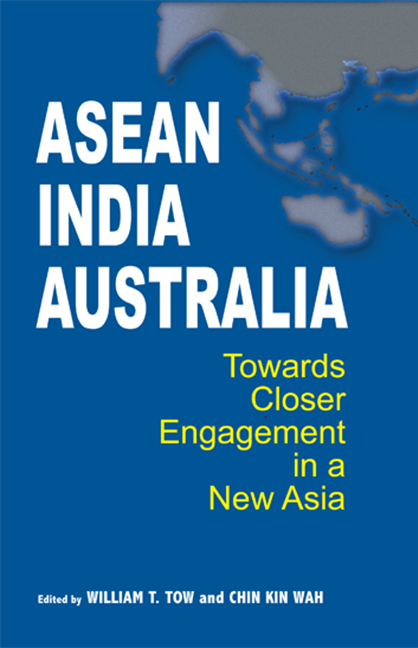Book contents
- Frontmatter
- Contents
- Preface
- Contributors
- List of Abbreviations
- Introduction
- Part I Emerging Regional Security
- Part II Energy Security
- Part III Climate Change
- Part IV Maritime Security
- Part V Law Enforcement/Combating International Crime
- 17 Implications of the Growing Prevalence of Interregional Crime for Cooperation in the Asia-Pacific Region
- 18 Australian Perspectives on Regional Law Enforcement: Issues and Challenges
- 19 Countering International Crime in an ASEAN Context: Singapore's Perspective
- 20 Indian Perspectives on Law Enforcement against International Crime
- Conclusion
- Bibliography
- Index
17 - Implications of the Growing Prevalence of Interregional Crime for Cooperation in the Asia-Pacific Region
from Part V - Law Enforcement/Combating International Crime
Published online by Cambridge University Press: 21 October 2015
- Frontmatter
- Contents
- Preface
- Contributors
- List of Abbreviations
- Introduction
- Part I Emerging Regional Security
- Part II Energy Security
- Part III Climate Change
- Part IV Maritime Security
- Part V Law Enforcement/Combating International Crime
- 17 Implications of the Growing Prevalence of Interregional Crime for Cooperation in the Asia-Pacific Region
- 18 Australian Perspectives on Regional Law Enforcement: Issues and Challenges
- 19 Countering International Crime in an ASEAN Context: Singapore's Perspective
- 20 Indian Perspectives on Law Enforcement against International Crime
- Conclusion
- Bibliography
- Index
Summary
The regions within which criminals interact can be likened to Barry Buzan's concept of a “security complex”. By a “security complex”, Buzan had in mind a region in which the internal “amity-enmity” lines are more powerful than the external “amity-enmity” lines. In the case of criminal activity, the equivalent to a security complex would be a group of countries within which criminal “transactions” are more intense than they are with countries outside that group. In this chapter we refer to such groupings as “crime regions”.
Similarly, we refer to “crime locations” as specific countries in which criminality, including transnational crime, has taken root because of poor governance, and from which criminal attacks on outside countries can be mounted at minimal risk to the criminal.
The thesis of this chapter is that certain closely related structural changes to the international order and transnational crime have progressively facilitated the breaking down of “crime regions” and increased propensity of “crime locations” to have an impact outside their own “crime regions”. As a consequence, we have also witnessed in recent years the increasing propensity for criminal activity to take on inter, as well as an intra, regional dimensions. This development has important implications for international cooperation against transnational crime. The three regions we discuss are South Asia, Southeast Asia, and Australasia (including the Southwest Pacific).
Globalization and structural changes to transnational criminal groups
It is now often argued that criminal groups capable of acting successfully across international borders have certain characteristics. They consist of individuals or small, “nimble” groups forming temporary alliances for specific criminal purposes. Such networks often operate across some of the ethnic demarcation lines that traditionally characterized secret criminal activity. Members of these modern groups are frequently well connected into political and official circles. They depend on networked transactions. They also operate in so-called “grey markets”, which bridge legitimate business activity and criminality. This type of criminal interaction has become known in some circles as “transactional” organized crime.
- Type
- Chapter
- Information
- ASEAN-India-AustraliaTowards Closer Engagement in a New Asia, pp. 293 - 318Publisher: ISEAS–Yusof Ishak InstitutePrint publication year: 2009



